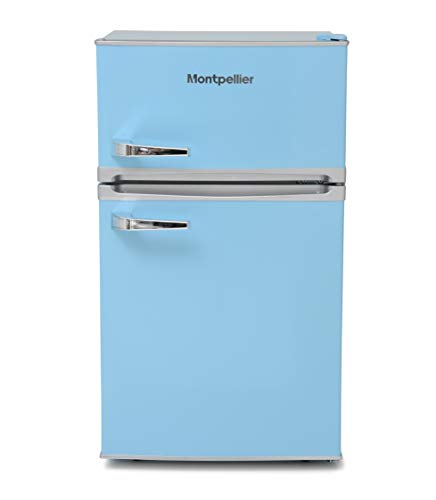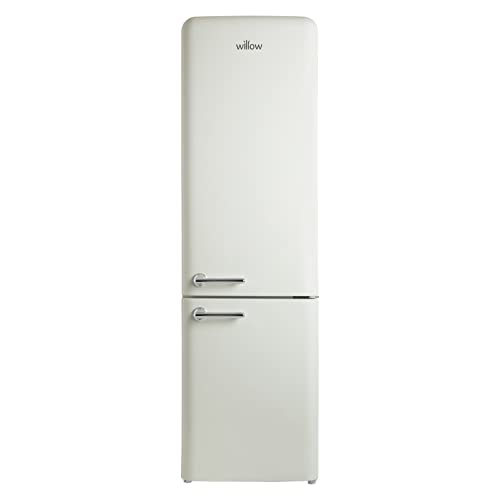
Fridge Uk
Add a review FollowOverview
-
Founded Date 30/10/2017
-
Sectors Pre-School
-
Posted Jobs 0
-
Viewed 20
Company Description
The Best Fridges And Freezers Tricks To Transform Your Life
Understanding Fridges and Freezers: The Essential Kitchen Appliances
Refrigerators and freezers are two of the most necessary home appliances in modern-day kitchens. These appliances serve a vital function in food conservation and waste reduction by making sure that disposable products stay fresh and safe for intake. This short article looks into the various types of fridges and freezers, their functionalities, and essential considerations for choice and upkeep.
Kinds of Refrigerators
The market uses a range of refrigerator types, each designed to satisfy different consumer needs. Below is a list of the most common kinds of fridges:
-
Top-Freezer Refrigerators

- Most typical type.
- Freezer compartment is located above the refrigerator area.
- Usually more budget friendly and energy-efficient.
-
Bottom-Freezer Refrigerators
- Freezer is located at the bottom.
- Allows much easier access to fresh products at eye level.
- Frequently includes pull-out drawers for much better company.
-
Side-by-Side Refrigerators
- Refrigerator and freezer areas are adjacent.
- Suitable for narrow cooking areas and permits simple access to both compartments.
- Typically includes water and ice dispensers.
-
French Door Refrigerators
- Integrates a bottom freezer with double doors at the top.
- Offers adequate storage and elegant styles.
- Often includes features like temperature-controlled drawers.
-
Compact Refrigerators
- Smaller sized size suitable for minimal areas.
- Typically utilized in dormitory, studio apartments, or as secondary fridges.
Table 1: Comparison of Refrigerator Types
| Type | Benefits | Drawbacks | Typical Size |
|---|---|---|---|
| Top-Freezer | Cost effective, energy-efficient | Less convenient access to the freezer | 14-30 cu. ft. |
| Bottom-Freezer | Simpler access to fresh food | Freezer can be harder to arrange | 19-30 cu. ft. |
| Side-by-Side | Easy gain access to, water/ice dispenser | Narrow vs. storage area | 22-30 cu. ft. |
| French Door | Stylish, roomy, organized | More expensive | 20-30+ cu. ft. |
| Compact | Space-saving, portable | Minimal storage | 1.7-5.5 cu. ft. |
Types of Freezers
Freezers are a similarly essential device for food preservation. They can be found in numerous styles developed to fit different home needs. Consider the list below types:

-
Upright Freezers
- Operate like a standard refrigerator with vertical storage.
- Simpler to organize with shelves and compartments.
-
Chest Freezers
- Big, horizontal design generally offering more storage area.
- Maintains temperature levels better throughout power blackouts.
- More energy-efficient than upright models.
-
Portable Freezers
- Compact systems perfect for outside activities or little areas.
- Frequently used for camping trips or as temporary storage.
Table 2: Comparison of Freezer Types
| Type | Advantages | Downsides | Common Size |
|---|---|---|---|
| Upright Freezer | Simpler to organize | Less energy-efficient, more floor space | 5-20 cu. ft. |
| Chest Freezer | Holds more products, energy-efficient | Harder to arrange | 5-25 cu. ft. |
| Portable Freezer | Compact and flexible | Restricted storage capacity | 1-10 cu. ft. |
Key Features to Consider
When choosing a fridge or freezer, customers need to bear in mind several functions that can improve functionality:
- Energy Efficiency: Look for models with the ENERGY STAR accreditation to minimize electricity costs.
- Storage Capacity: Evaluate storage needs based on household size and consuming routines.
- Temperature Control: Some home appliances use digital controls for precise temperature settings.
- Adjustable Shelving: Customizable shelving permits optimum company.
- Water and Ice Dispenser: Offers convenience however can take up valuable area inside.
- Noise Level: Sound rankings can influence convenience, specifically in open-concept homes.
Advantages and disadvantages of Having a Fridge and Freezer
While fridges and freezers are essential innovations, they likewise have specific benefits and drawbacks:
| Pros | Cons |
|---|---|
| Maintain food lifespan and decrease waste | Need regular upkeep |
| Enable bulk purchasing and meal prepping | Can be costly to acquire and run |
| Offer convenience and fast access to food | Occupy significant kitchen space |
Upkeep Tips
To guarantee durability and optimum efficiency of fridges and freezers, think about the following upkeep pointers:
- Regular Cleaning: Clean the interior and outside periodically to avoid buildup of dirt and germs.
- Inspect Seals: Inspect door seals frequently for leakages to maintain performance.
- Temperature Settings: Keep the fridge at 34-38 ° F and the freezer at 0 ° F for ideal food conservation.
- Defrost as Needed: Chest freezers need to be thawed frequently to maintain efficiency.
- Clear Air Vents: Ensure that air flow isn’t obstructed to improve energy effectiveness.
FAQs About Fridges and Freezers
Q1: How long can food be saved in a freezer?A: Most foods can be kept in a freezer for a number of months. Meats and poultry frequently last 4-12 months, while veggies can last up to 8-12 months.
Q2: How frequently must I clean my fridge and freezer?A: It is a good idea to clean your fridge and freezer every 3 to 6 months, or as required when spills occur. Q3: Can I put hot food directly in the fridge?A: It is advised to cool hot food to space temperature before positioning it in the fridge to prevent
raising the temperature level inside the appliance. Q4: Why is my fridge running constantly?A: This could be due to a malfunctioning thermostat, stopped up coils, or door seals that aren’t working effectively. Fridges and freezers are indispensable
properties to modern homes, providing important services for food storage and conservation.
Comprehending the numerous types, functions, and upkeep requirements can assist customers select the Best fridges appliances for their requirements and optimize their performance. Accepting energy-efficient models not just supports sustainable practices however also contributes to considerable cost savings on energy expenses, making informed options more vital than ever.
